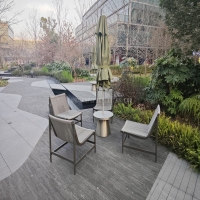Welcome to the website for landscape facilities products and knowledge.
How does the table’s design ensure compatibility with different types of seating, like benches or stools?
Modern table design ingeniously bridges the gap between diverse seating options through several key principles. The cornerstone of this compatibility is the establishment of universal height standards. Most dining tables maintain a consistent height between 28 to 30 inches, which aligns perfectly with the standard seat heights of both benches and stools, creating a harmonious and comfortable level for dining or working.
Furthermore, the structural design of the table plays a crucial role. Tables with clear leg space, such as those supported by a central pedestal base or strategically placed legs at the corners, offer unparalleled flexibility. This design allows users to easily pull up a backless bench or slide in a set of stools without obstruction, accommodating varying numbers of occupants. The table's surface overhang—the extension beyond the base—is another critical factor, providing essential knee and leg room for those seated on backless options like benches.
Material and aesthetic choices also contribute to this versatile compatibility. A table with a neutral, minimalist design and durable surface can visually and functionally coordinate with the rustic charm of a wooden bench, the industrial feel of metal stools, or the sleek look of upholstered seating. This thoughtful integration of standardized dimensions, unobstructed legroom, and adaptable styling ensures that a single, well-designed table can form the centerpiece of a dynamic and comfortable space, regardless of the seating arrangement chosen.
Related search:

Recommendation
Metal structure rattan chair without armrests for single person, with woven seat and backrest.